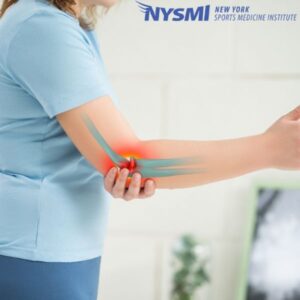A bone bruise, also known as a bone contusion, is an injury to the bone that is more severe than a typical bruise but less serious than a fracture. When a bone is subjected to a strong impact or trauma, such as a fall, sports injury, or accident, the small blood vessels within the bone break, causing blood and fluid to accumulate. This results in swelling, pain, and sometimes discoloration of the skin over the affected area. While bone bruises are common among athletes, anyone can experience them, and prompt evaluation by an orthopedic doctor in midtown is essential for proper diagnosis and care.
How Does a Bone Bruise Differ from Other Injuries?
 Unlike a soft tissue bruise, which affects only the skin and muscle, a bone bruise involves the bone’s internal structure. The injury does not cause a full break but can affect the bone’s outer layer (periosteum), the cartilage, or even the bone marrow itself. Bone bruises are typically classified into three types:
Unlike a soft tissue bruise, which affects only the skin and muscle, a bone bruise involves the bone’s internal structure. The injury does not cause a full break but can affect the bone’s outer layer (periosteum), the cartilage, or even the bone marrow itself. Bone bruises are typically classified into three types:
- Subperiosteal hematoma: Bleeding beneath the bone’s outer layer.
- Interosseous bruise: Bleeding and swelling within the bone marrow.
- Subchondral bruise: Bleeding and swelling beneath the cartilage that covers the bone.
At New York Sports Medicine Institute, an experienced orthopedic doctor in Midtown can distinguish between these types using advanced imaging techniques, such as MRI, since bone bruises are not visible on standard X-rays.
Symptoms of a Bone Bruise
Common symptoms include:
- Persistent, deep pain at the injury site
- Swelling and tenderness
- Stiffness or reduced range of motion
- Skin discoloration near the affected area
These symptoms often last longer than those of a typical bruise and may be accompanied by joint pain if the injury occurs near a joint.
Diagnosis and Treatment
If you suspect a bone bruise, it is important to consult New York Sports Medicine Institute, an orthopedic doctor in Midtown, for a thorough evaluation. Diagnosis usually involves a physical examination and, if needed, MRI imaging to confirm the extent of the injury and rule out fractures or ligament damage. Treatment typically includes:
- Rest and activity modification
- Ice application to reduce swelling
- Elevation of the injured area
- Pain management with over-the-counter medications
- Physical therapy to restore function and mobility
Most bone bruises heal within several weeks to a few months, but recovery time can vary depending on the severity and location.
Why Choose an Orthopedic Doctor near Midtown?
At New York Sports Medicine Institute, you’ll find a highly skilled orthopedic doctor in Midtown who specializes in diagnosing and treating bone bruises and other musculoskeletal injuries. Our team uses the latest diagnostic tools and personalized treatment plans to ensure optimal recovery and prevent long-term complications. Whether you’re an athlete or have suffered an accidental injury, our orthopedic doctor in midtown is dedicated to helping you regain full function and return to your daily activities as quickly and safely as possible. If you’re experiencing persistent pain or suspect a bone bruise, schedule a consultation with an orthopedic doctor midtown at New York Sports Medicine Institute for expert care and lasting relief.

